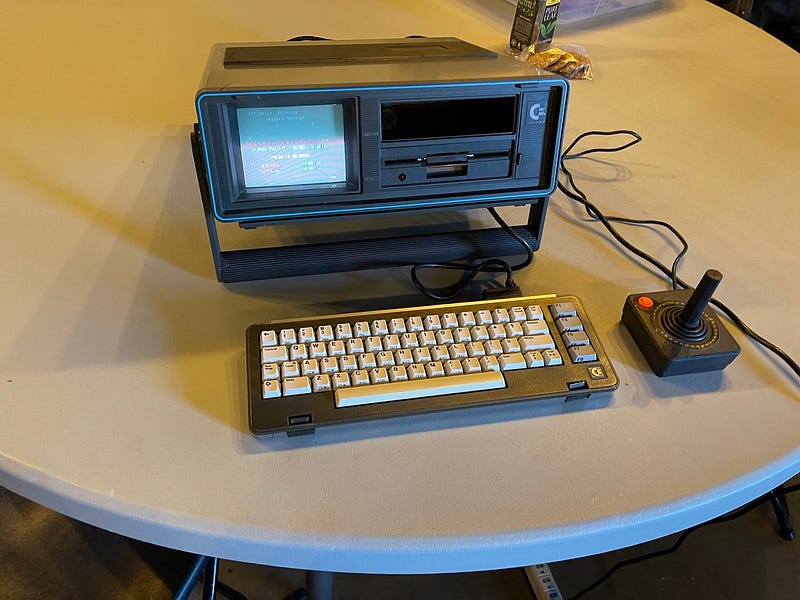Old Tech Meets New Tech: A Journey Through Time
Written on
Chapter 1: A Milestone Weekend
This past weekend marked an important occasion for me. I had the privilege of speaking at the Commodore Los Angeles Super Show in Burbank, coinciding with my inaugural long drive in our new Chevrolet Bolt EUV. For me, this experience symbolized more than just a vehicle or a destination; it represented the bridge between vintage technology and modern advancements.
Electric vehicles epitomize the pinnacle of consumer electronics today. With advancements in rechargeable batteries, electric motors, video displays, touchscreens, and computing power, we now rely on these innovations for safe long-distance travel. Yet, I remember when these technologies first emerged.
During my tenure at AST in the late 1980s and early 1990s, I crafted user manuals for the company’s initial laptop, the Premium Exec. This device boasted a nickel-cadmium (NiCad) battery that lasted a mere 90 minutes under optimal power-saving conditions. Its LCD display was black-and-white and lacked backlighting, making it challenging to see unless viewed directly in bright environments. Instead of a mouse, it offered a clip-on trackball and was considered outrageously priced, yet it found a market and remains available on eBay to this day.
This laptop was a remarkable step forward from the Commodore 64, which marked the beginning of my career in the computer industry. My first computer-based presentation occurred in 1986 when I demonstrated GEOS to a Commodore user group using a Commodore SX-64—a hefty machine weighing 23 pounds (10.5 kilograms) with a minuscule screen.

It was connected by a tangled mess of cables to an LCD projector roughly the size of a small freezer. The projector featured three lenses for red, green, and blue that were as large as dinner plates. The technician operating the projector cautioned me against looking directly into the lenses, lest I risk blindness.
Fast forward to today, and I find myself driving a vehicle equipped with lithium-ion batteries that can cover 247 miles (399.1 kilometers) on a single charge, complete with vibrant high-resolution screens and advanced computer systems that I trust for braking. However, this technology didn't materialize overnight; it has a rich history. I was reminded of this history while attending the Commodore Los Angeles Super Show.
We must safeguard this legacy and share it with the younger generations. It's essential for them to understand the origins of the technologies they rely on daily. How did we transition from bulky desktop computers to the devices in our pockets? What factors led some products to thrive while others faltered? How different would their lives be if certain technologies had succeeded? These themes resonate in my novel, Amiga. Though I could have set the story entirely in the 1980s, I aimed to illustrate the connections between the past and present—both in technology and personal experiences.
Years from now, the electric vehicles and technologies we utilize today will likely seem as antiquated as the AST Premium Exec and Commodore 64 do now. However, they represent a continuum of human ingenuity and progress—a history worth remembering and celebrating.
Chapter 2: Bridging Generations
In this chapter, we delve deeper into how technology shapes our lives and the importance of understanding its history to inspire future innovations.